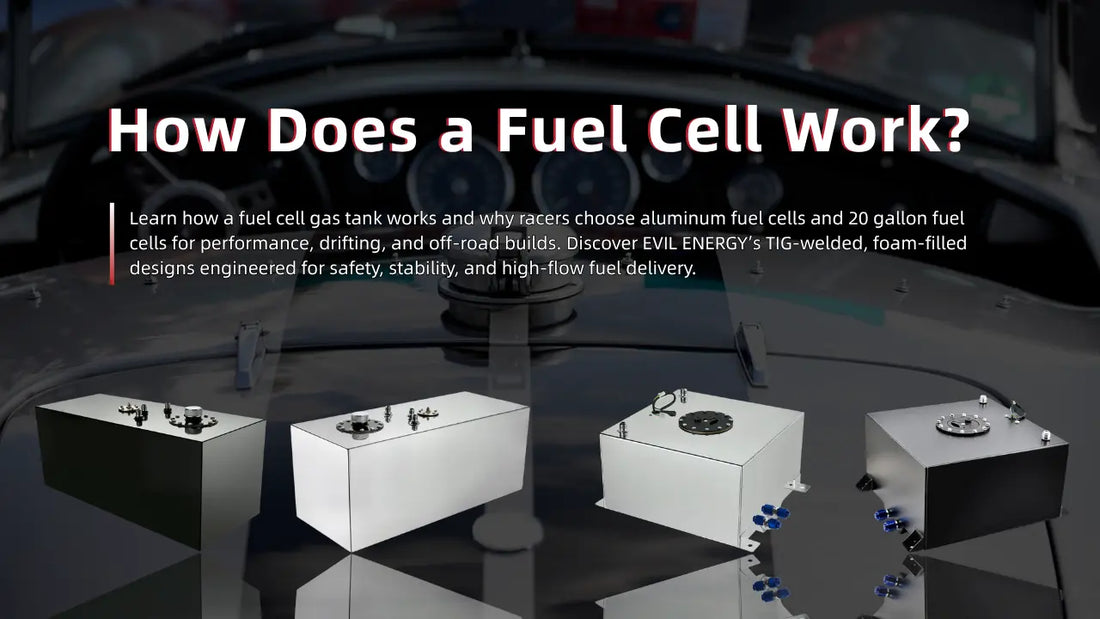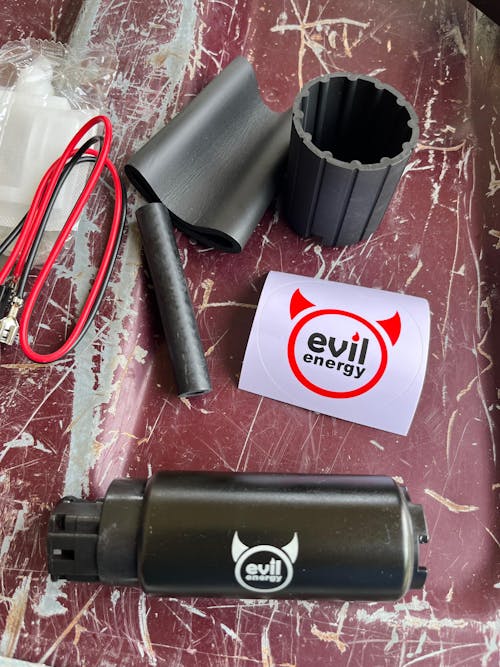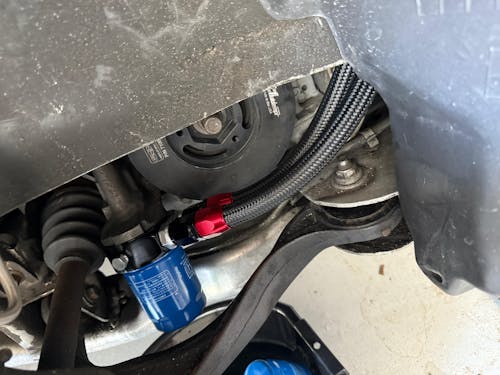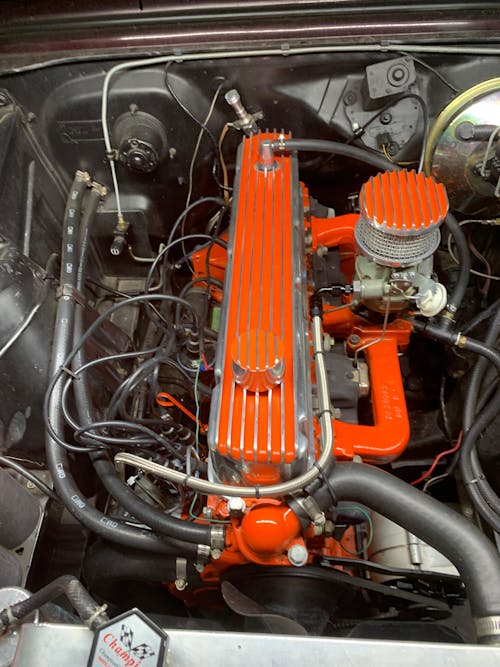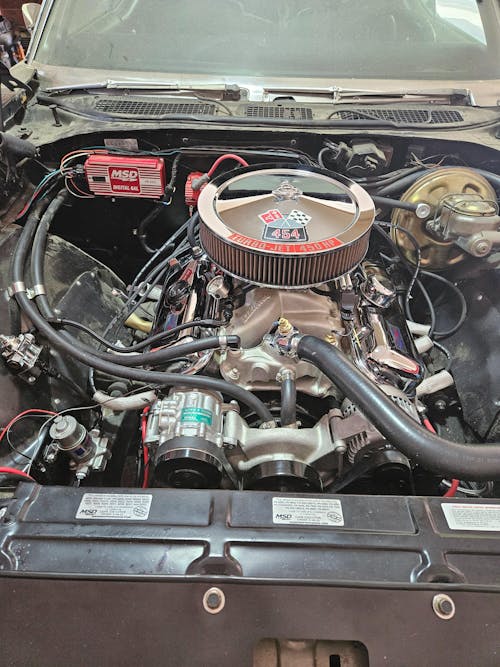How Does a Fuel Cell Work?
The Complete Guide for Performance and Racing Applications
When people hear the term fuel cell, they often think of hydrogen-powered electric vehicles. But in the automotive performance world, a fuel cell refers to a high-safety fuel storage tank, engineered for racing, drifting, off-road, and performance street applications.
Instead of producing electricity, this type of fuel cell—often called a fuel cell gas tank—stores and delivers gasoline more safely and efficiently under extreme conditions.
(Reference: EVIL ENERGY Fuel Cell Gas Tank Guide)
What Is a Fuel Cell (in Automotive Terms)?
In motorsports and custom builds, a fuel cell is a reinforced fuel storage unit made from metal (usually aluminum or steel) with internal foam baffling, rollover valves, and high-flow fittings.
Its goal is simple: To keep fuel supply safe, stable, and consistent, even under high-G acceleration, cornering, or rough terrain.
As explained by Pegasus Auto Racing Supplies, 'A fuel cell works like the gas tank in your street car—but it’s designed to prevent spilled fuel in a racing incident.'
(Source: PegasusAutoRacing.com)
How Does a Fuel Cell Work?
A performance fuel cell operates just like a conventional tank but adds advanced engineering to ensure stability and safety in demanding conditions.
Structure & Components
-
Outer shell (usually aluminum): Lightweight yet strong, resists corrosion and impact.
-
Anti-slosh foam or internal baffling: Prevents fuel surge and vapor lock during hard turns or braking.
-
Rollover and vent valves: Stop leaks and pressure buildup.
-
-AN fuel fittings: Provide a secure, high-flow connection to external fuel lines.
Operating Process
-
Fuel is stored inside a sealed, reinforced aluminum tank.
-
The internal foam controls liquid motion, ensuring the fuel pump draws a consistent supply.
-
During acceleration, braking, or rough driving, baffling prevents fuel starvation or slosh.
-
Vent valves manage vapor safely, protecting both performance and driver safety.
This makes the aluminum fuel cell an essential upgrade for anyone who values consistent fueling and enhanced protection under pressure.
Why Choose an Aluminum Fuel Cell?
Aluminum is the preferred material for performance fuel systems due to:
-
Lightweight design: Reduces overall vehicle weight while maintaining strength.
-
Corrosion resistance: Ideal for use with gasoline, race fuels, or ethanol blends.
-
Heat dissipation: Prevents vapor lock in high-temperature environments.
-
Professional appearance: TIG-welded seams and anodized finishes give a clean, race-ready look.
An aluminum fuel cell also provides flexibility for custom builds, allowing users to reposition the tank (trunk-mount, rear seat delete, etc.) while maintaining safety and efficiency.
What Is a 20 Gallon Fuel Cell?
A 20 gallon fuel cell is a large-capacity version (about 75 liters) designed for endurance racing, off-road rigs, or high-displacement engines that consume more fuel.
Typical dimensions
-
24-inch × 20-inch × 10-inch or
-
19.7-inch × 17.5-inch × 10-inch, depending on brand and design.
A 20 gallon tank provides extended range and fewer refueling stops, but it’s also heavier, so choosing the right size depends on your balance between weight and endurance.
(Reference: Holley Performance – Fuel Cell Buyer’s Guide)
Who Needs a Fuel Cell?
Typical Users
-
Racers & Drifters: Need steady fuel delivery during high-G maneuvers.
-
Off-road enthusiasts: Require a tank that can withstand vibration, jumps, and impacts.
-
Engine-swap builders: Relocating or customizing the fuel system for new layouts.
-
Safety-focused drivers: Seeking a stronger, leak-resistant alternative to OEM tanks.
Common Applications
-
Track racing and time-attack builds
-
Drifting and autocross setups
-
Off-road and rock-crawling rigs
-
Custom muscle cars and restomods
Whether you’re building a track car or overlanding rig, an aluminum fuel cell ensures reliable fueling and safer operation in any environment.
How to Choose the Right Fuel Cell
Choosing the right fuel cell depends on how you drive, your vehicle’s engine setup, and your performance goals. Here’s a quick guide to help you pick the perfect match:
Capacity — How Much Fuel Do You Really Need?
-
8–10 Gallon Fuel Cell: Ideal for short-track racing, drift cars, and lightweight builds. These smaller tanks save weight and fit compact spaces while still providing enough capacity for short sessions.
-
15–20 Gallon Fuel Cell: Perfect for endurance racing, off-road rigs, or high-horsepower engines that consume more fuel. A 20 gallon fuel cell offers extended range and fewer refueling stops—great for long-distance or dual-purpose vehicles.
Tip: Always measure your installation space before choosing the tank size. Larger capacity = longer runtime, but also more weight.
Material — Choose Durability and Safety
For any serious performance or off-road build, go with a TIG-welded aluminum fuel cell.
Why aluminum?
-
It’s lightweight yet extremely strong.
-
Resistant to corrosion and heat.
-
Compatible with various fuels (gasoline, ethanol, E85).
Look for
-
Fully TIG-welded seams for durability.
-
Internal anti-slosh foam or baffles for stable fuel flow.
Compatibility — Make Sure It Fits Your Setup
-
Check the fitting size (most use 10AN or 7/8-14 UNF threads).
-
Verify the vent line routing to avoid pressure buildup.
-
Ensure the foam and seals are compatible with your chosen fuel type (gasoline or E85).
Certifications — For Track and Competition Use
If you plan to enter official races, choose a fuel cell that meets industry safety standards, such as:
-
FIA FT3 / FT5
-
SFI 28.1
These certifications guarantee the tank meets professional impact and leak prevention requirements.
Quick Summary
EVIL ENERGY Fuel Cell Gas Tank
EVIL ENERGY offers a full line of aluminum fuel cells designed for performance builds:
-
Capacities: 8 / 10 / 12 / 15 / 20 gallon options
-
Features: Anti-slosh foam, TIG-welded aluminum body, anodized finish, -AN fittings, and integrated level sender
-
Use cases: Compatible with EFI, carbureted, and return-style systems
Final Thoughts
A fuel cell isn’t just a tank—it’s a performance and safety system. By choosing a high-quality aluminum fuel cell—like a 20 gallon fuel cell from EVIL ENERGY—you ensure consistent fueling, reduced vapor lock, and improved driver protection, whether you’re on the street, the track, or the trail.
If you care about performance, reliability, and safety, upgrading to a race-grade fuel cell is one of the smartest decisions you can make for your build.



![[20FT] EVIL ENERGY PTFE Fuel Line Kit, complete black hose & fittings set, 180-day return](http://www.ievilenergy.com/cdn/shop/files/Test-2025-Evilenergy-125598065_165x.png?v=1742144807)
![[16FT] EVIL ENERGY PTFE Fuel Line Kit, black braided hose, fittings, free shipping & return](http://www.ievilenergy.com/cdn/shop/files/Test-2025-Evilenergy-125598171_165x.png?v=1742144807)
![CPE Fuel Line[25FT]](http://www.ievilenergy.com/cdn/shop/files/25FTCPE_FuelLine_165x.png?v=1735220649)
![CPE Fuel Line[20FT]](http://www.ievilenergy.com/cdn/shop/files/20FTCPE_FuelLine_165x.png?v=1735220649)
